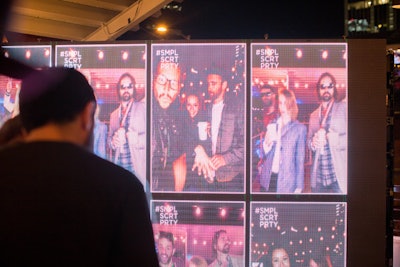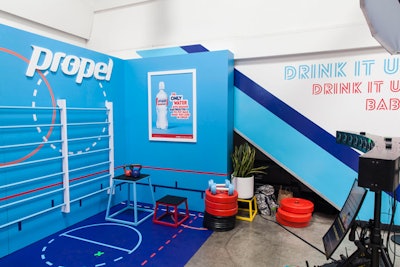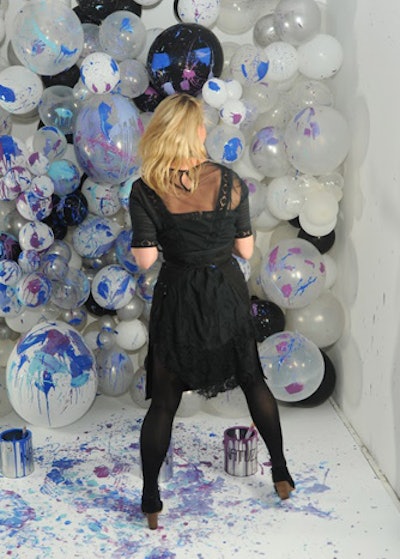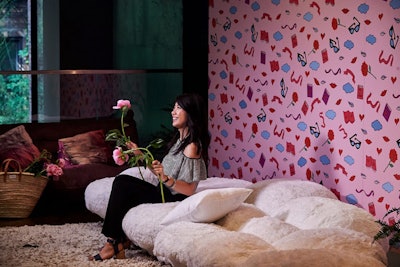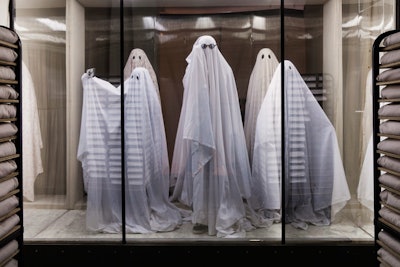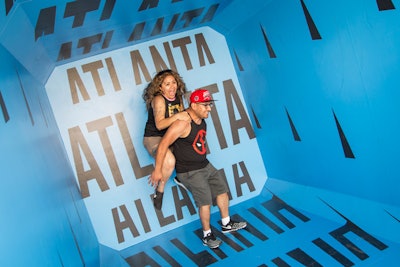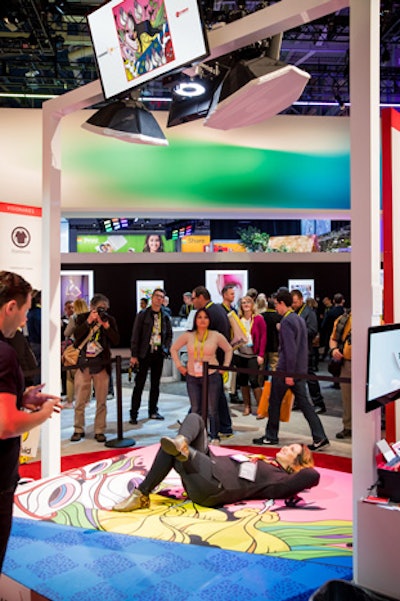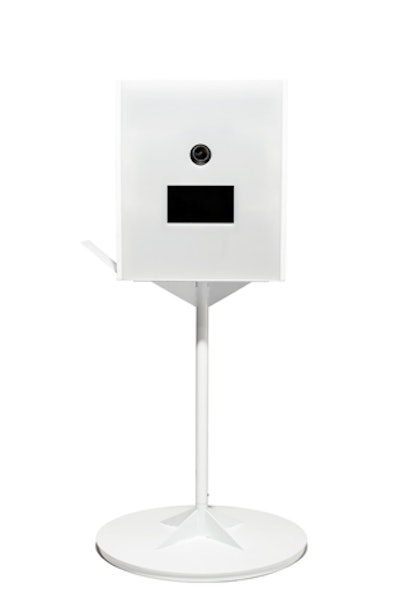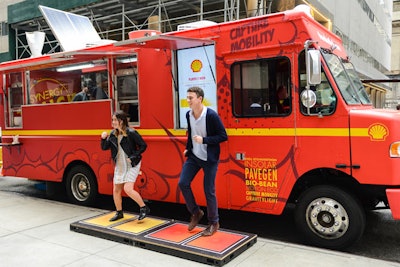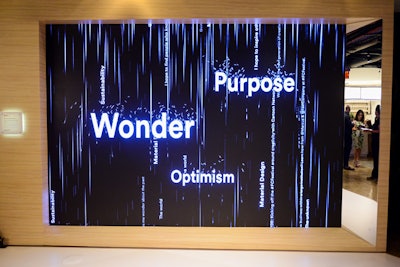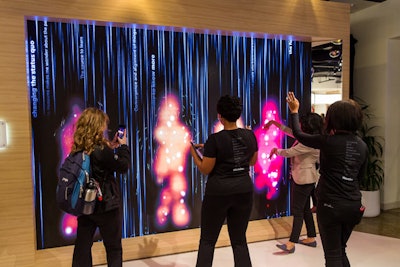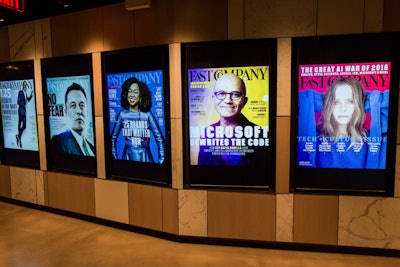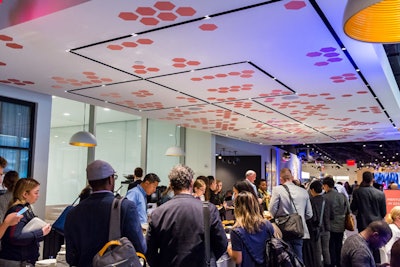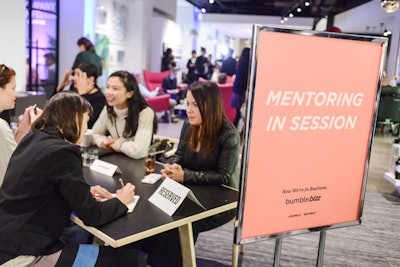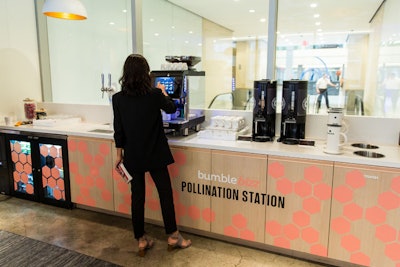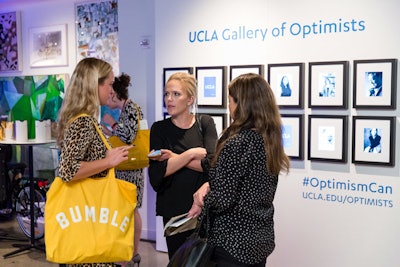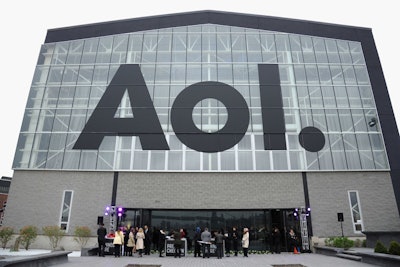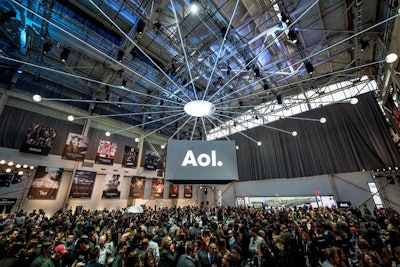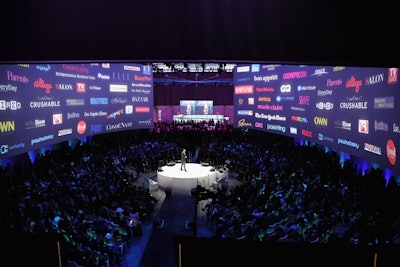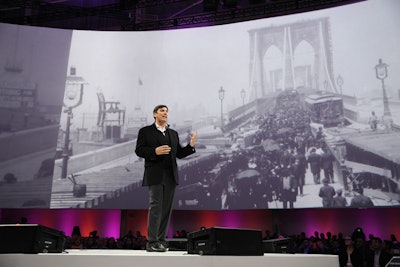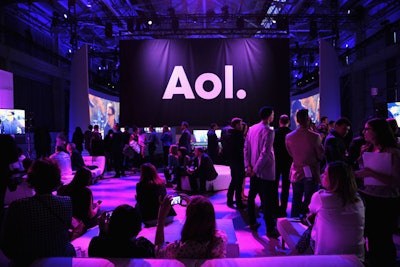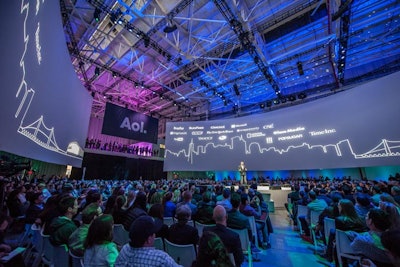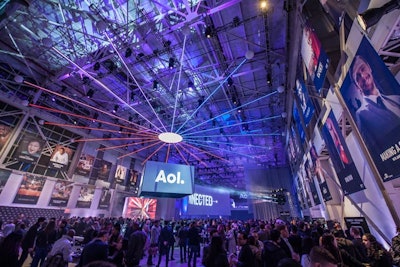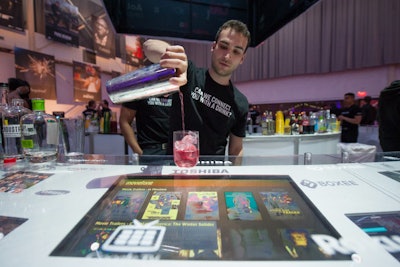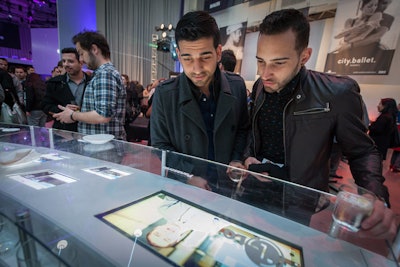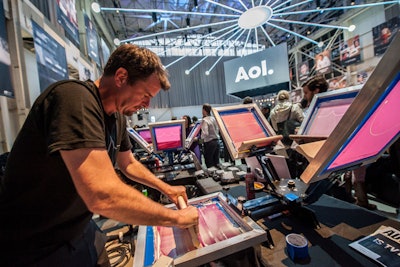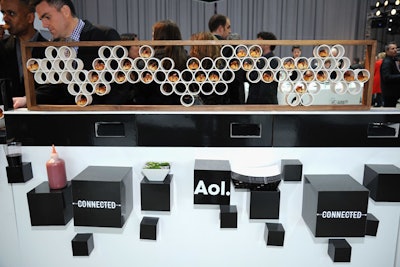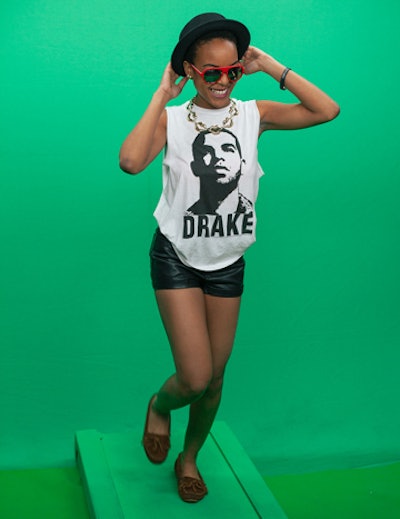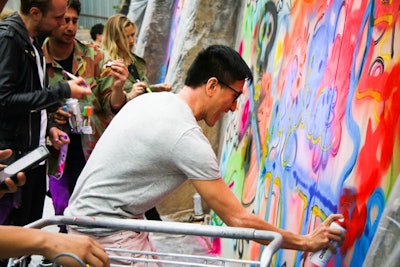
Spotify hosted a summer block party for its 750 employees on June 8. Held at the Knockdown Center in Queens, New York, the event featured basketball courts, a disco ball, a roller rink, a 1977 Cadillac Coupe DeVille photo booth, and a performance by T-Pain. An interactive graffiti wall allowed guest to spray paint their own designs. The event was planned and produced by Tinsel & Twine.
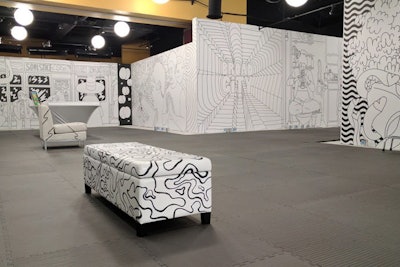
Comic-Con International, which was held from July 20 to 23 in San Diego, is known for over-the-top stunts and interactive fan experiences. Comedy Central series Broad City got in on the action for the first time this year with a life-size coloring book activation. Illustrations designed by Broad City artist Mike Perry covered the walls and furniture.
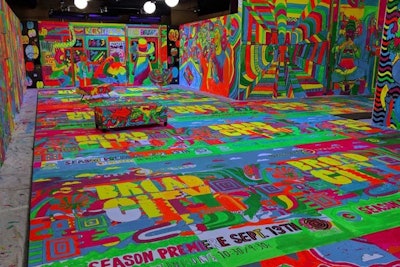
Throughout the long weekend, attendees used neon paint to add color. The activation—which took place at the San Diego Wine & Culinary Center—also offered Broad City-inspired manicures and temporary tattoos.

On July 20, the Long Beach Convention Center opened its newest event space, the Cove, with a street party that included food trucks and games such as ping-pong and foosball. In honor of Long Beach's history as a port town, and to tie into Pow Wow Long Beach, which created large outdoor murals around the city, the event at the Cove featured large shipping containers that guests could paint throughout the evening. The containers were provided by Duncan & Son Lines.
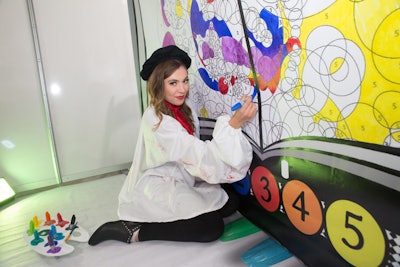
At BizBash Live: Los Angeles and BizBash Live: Florida, held on July 19 and May 4, respectively, Champagne Creative Group encouraged guest participation at its booth with a giant coloring book.
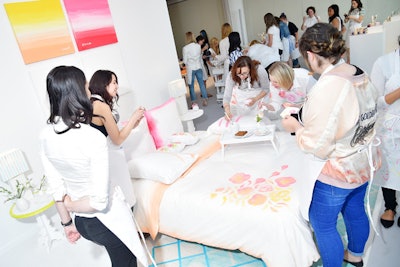
To mark the launch of her new line at Michaels, Martha Stewart hosted a colorful, interactive paint party at Hudson Studios in New York on June 15. David Stark Design and Production built a colorful house facade out of 2,710 bottles of home-decor paint and watercolor-craft paint. Guests were invited to grab paint brushes from window boxes, then go to work painting everything inside the house—including rugs, couches, lampshades, duvet covers, nightstands, and more. Organizers wanted to show the versatility of the paint, which can be used on fabric, wood, glass, ceramic, and metal surfaces.
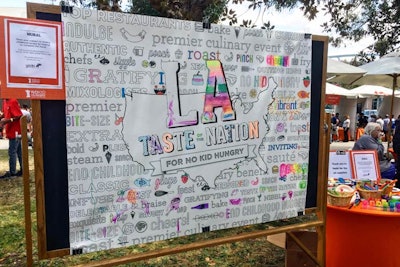
Taste of the Nation for No Kid Hungry draws top chefs and mixologists who donate their time and efforts to end childhood hunger in America. The 2017 event, which was held on June 11 at Media Park in Los Angeles, included tastes from more than 40 restaurants, breweries, wineries, and mixologists. Guests were invited to grab a paint brush and contribute to a mural using paint supplies donated by Yoobi.
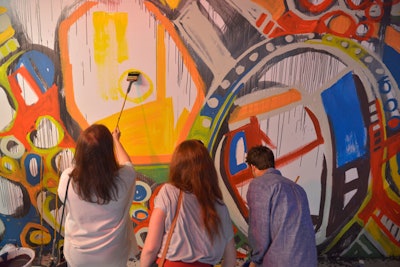
Toronto architectural studio Raw Design hosted its annual “Raw” party in June 2015, taking over a 3,000-square-foot industrial space. The 3,000 guests became an “army of artists,” according to organizer Kim Graham, and were invited to help create a giant paint-by-numbers picture, spray paint onto other guests, write on the wall, and paint on bottles at the bar.
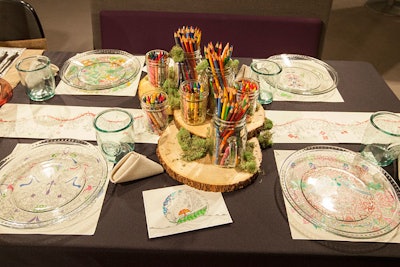
At Diffa Dining by Design at Chicago’s Merchandise Mart in November 2015, doodling was encouraged at the table designed by Allsteel and Henricksen. The design incorporated pages plucked from adult coloring books, and centerpieces held crayons and colored pencils.
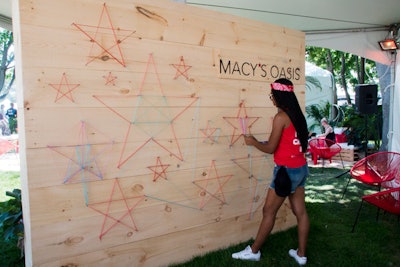
Art doesn’t have to involve paints and markers. At the inaugural Panorama music festival, held on Randall’s Island in New York in July 2016, Macy's partnered with LeadDog Marketing Group to produce the Macy's Oasis. The lounge gave festivalgoers a chance to relax, and featured a string art wall created by attendees.
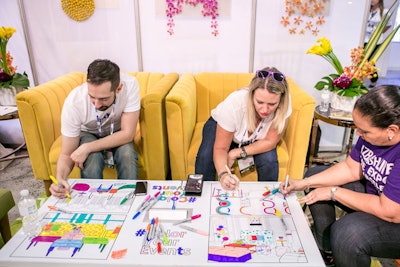
In 2016, national furniture rental company AFR introduced a new initiative called #ColorYourEvents, which allows guests to grab a marker and color in branded decals that are adhered to tabletops. Clients provide the artwork and markers, and AFR handles the decal printing and pasting. Pricing depends on the item and the size.
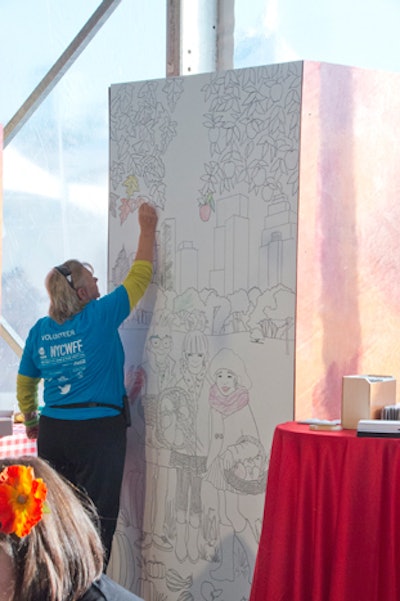
At the New York City Wine & Food Festival, held in October 2016 at Piers 92 and 94, a Coca-Cola-sponsored barbecue showcased a giant illustration of New York that guests were encouraged to color in throughout the event's duration. The illustration was created by Robert Gerdts, artistic director of Warren Moore Events.
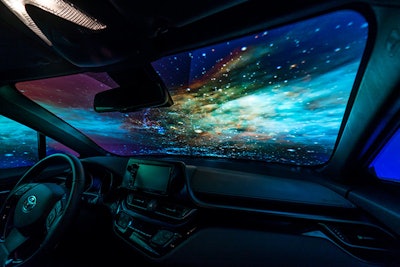
During Art Basel, which took place December 7 to 10 in Miami Beach, Toyota and its agency, Burrell, worked with Lightwave to create an emotion-technology experience to promote the new C-HR subcompact SUV. Before sitting in the car, guests were fitted with wristband heart monitors that tracked their emotional response as they were immersed in an audiovisual experience that included projection mapping on the vehicle’s windows. After they stepped out of the car, a line graph of their heart rate data was projected onto an eight-foot circular canvas, and painters from Lightwave Studio added brushstrokes to turn it into a custom piece of art.
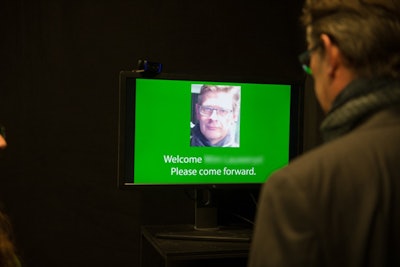
Facial recognition can now be used to streamline event check-in. The organizers of Belgian Roof Day, a trade show for the roofing industry held in Brussels, tested this technology from Zenus at its most recent event in November. About a week before the event, attendees received an email inviting them to upload a headshot to speed up check-in. At the event, those who chose to participate could use a separate “fast lane” that had a screen with a camera attached. When the system recognized the guest standing in front of the camera, the screen would turn green, display a personalized welcome message, and prompt them to pick up their badge at a nearby kiosk.

At the Sundance Film Festival in January, presenting sponsor Acura gave guests a personalized driving experience using virtual reality and brain wave technology. Guests sat inside a spherical motion simulator equipped with a performance driver’s seat and 30 biometric sensors that measured things such as their brainwaves, heartbeat, and facial expressions. Then the scene that unfolded for 90 seconds on the screen in front of them changed based on their inputs, affecting speed, acceleration, colors, sound, and more. Each participant received a shareable picture that showed them during the experience along with a graphical presentation of their mood. The Moods Roads experience reached 2.5 million people through social sharing. Acura’s Sundance experience was created by George P. Johnson, Spinifex Group, GMUNK, Tool of North America, and MullenLowe.
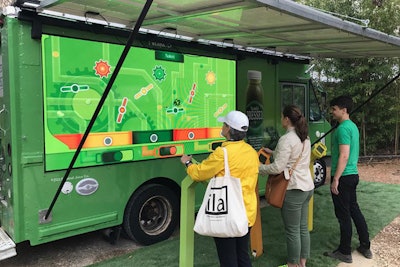
To promote the release of Naked Juice’s Naked Pressed juice, the brand used a solar-powered vehicle that drove from New York to the Santa Monica Pier in March, with a stop in between for five days at South by Southwest in Austin. The truck, created by Future Colossal in partnership with Ignition Factory, had an automatic juice dispenser and a 10-foot interactive display that was used for a multi-player game with consumers at the stops at SXSW and Santa Monica. Using gesture tracking and wireless tablets, the game pitted three players against each other to capture and juice falling produce. At the end of each game the truck automatically dispensed bottles of juice. The solar array powered the game and also doubled as an awning to shield players from sun and rain.
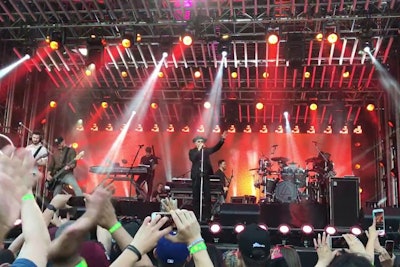
In May, Linkin Park played a free show on the backlot stage at Jimmy Kimmel Live in Los Angeles. The show was free and not ticketed, but the band wanted a way to connect with those who attended after the performance. To do that, it worked with Ampsy, which provides hyper-local social content aggregation, visualization, and analytics. Ampsy used social geofencing to discover posts on social media from people at the concert so the band could thank fans directly and offer them merchandise and other perks.
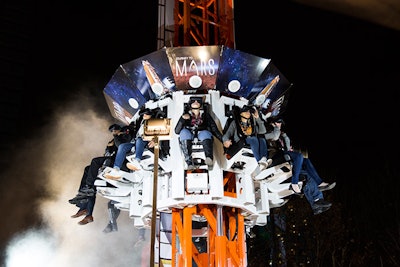
At Super Bowl LI in January, the Houston Host Committee gave fans the chance to take a virtual trip to Mars. Future Flight was a 90-foot drop tower that used virtual reality and audio to make riders feel as if they were traveling to Mars, landing on the planet with a few seconds to look around, and then dropping back down to earth and landing on the 50-yard line of a fan-filled NRG Stadium just in time for kickoff. The ride was designed by IDEAS, an Orlando-based experience design agency, and created in partnership with NASA, GES, ImaginNow, Exline Design and Architecture, and A.R.M. Houston is the home of the NASA Johnson Space Center and NASA has a goal of getting to Mars by 2030.
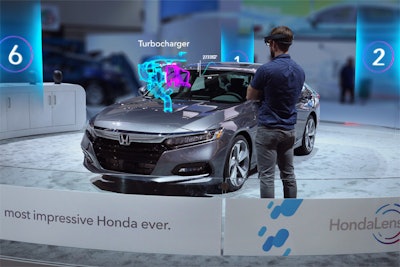
At the Los Angeles Auto Show in December, Honda worked with Spinifex Group and George P. Johnson to create an augmented-reality experience for visitors. As guests walked around the newest Honda Accord wearing a Microsoft Hololens headset, six stories about the vehicle appeared in their view. For example, standing outside the car a hologram version of the new turbocharged engine appeared to float out of the hood to show how it works. As guests sat in the driver’s seat, they experienced different traffic scenarios that were simulated through the windshield in front of them.
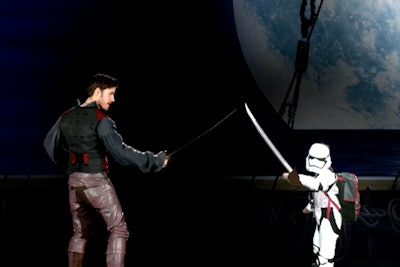
At Comic-Con International in San Diego in July, ABC used an interactive hologram of Captain Hook in its exhibit space to promote Once Upon a Time. The hologram, created by VNTANA, would speak to attendees about the upcoming season and then invite guests to engage in a sword fight.

At the North American International Auto Show in Detroit in January, Ford created a virtual-reality experience to help consumers see how the brand is committed to the “Future of Mobility.” Twelve guests at a time sat in the chairs and donned headsets, which made it feel as if a giant drone was lifting them in the air and flying them around a futuristic city. During the flight, the drone would pause to hover over certain scenes to provide more in-depth information about Ford’s mobility vision. Examples of the content in the experience included two friends using their FordPass app, a driver parking using pre-booking and autonomous vehicle technology, and a demonstration of what cars look like when you don’t need to hold a steering wheel. The flight also included some moments just for fun, such as diving down the side of a skyscraper and zooming down city streets. According to Imagination, which created the VR experience, 9,400 riders participated.
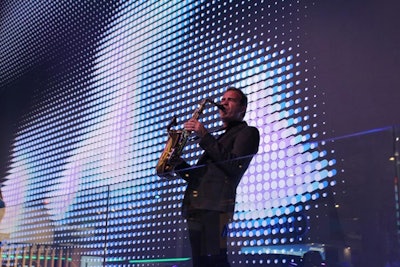
At Mobile World Congress in Barcelona in late February and early March, a massive wall of digital pin art served as the backdrop for Intel’s exhibit booth to provide an eye-catching example of the hyper-connectivity that will be available with 5G, the next generation of wireless technology that’s set to be available in 2020. Dubbed Wonderwall and designed by 2LK and Moving Brands, the 1,248-square-foot high-density LED panel reacted to what was taking place nearby, changing pin sizes, colors, angles, density, and more based on the movement and sounds coming from people in front of it. “It had moments when it was very active and it had moments which were really quiet, when you might mistake it for an inert, physical wall. It was that modulation between those modes which we were hoping would make people interested in the space,” said Glen Yeoh, motion design director at Moving Brands.
